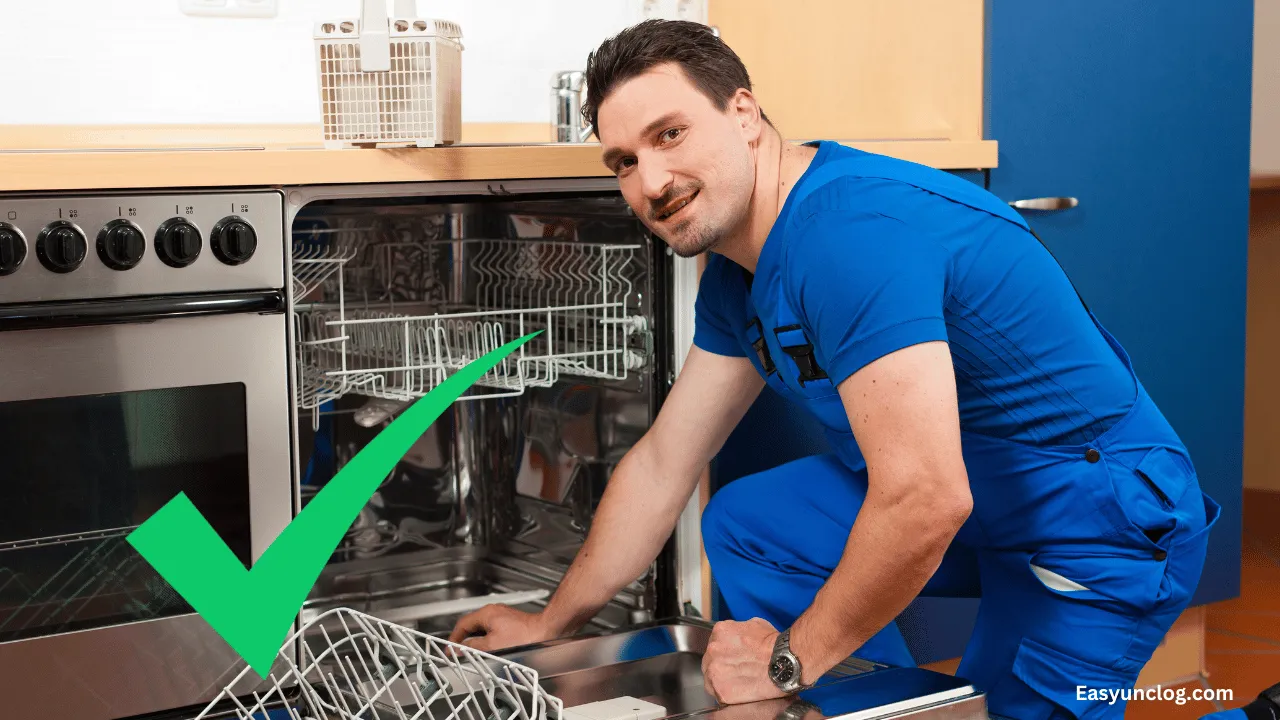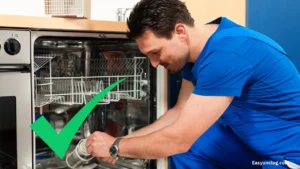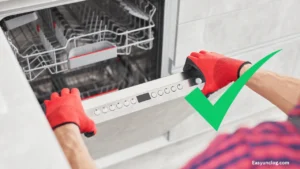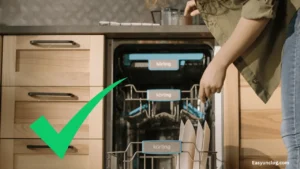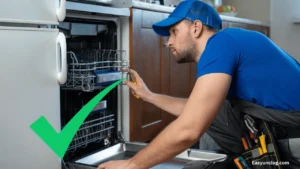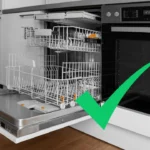In this article, I’ll guide you through the steps to unclog the bottom of your dishwasher, which is a common household issue. Regular maintenance and cleaning can prevent clogs and ensure your dishwasher runs efficiently.
If your dishwasher is not draining properly, it may be due to food particles, grease, or other debris clogging the drain. Here’s a comprehensive guide to help you tackle this problem.
Contents
- 1 Understanding the Basics of Your Dishwasher
- 2 Preparing to Unclog the Bottom of Your Dishwasher
- 3 Step-by-Step Guide to Unclogging the Bottom of the Dishwasher
- 4 Preventing Future Clogs
- 5 Conclusion
- 6 FAQs
- 6.1 1. Why is my dishwasher not draining properly?
- 6.2 2. How often should I clean my dishwasher filter?
- 6.3 3. Can a clogged dishwasher cause leaks?
- 6.4 4. Is using vinegar and baking soda to clean my dishwasher safe?
- 6.5 5. What should I do if cleaning doesn’t fix the drainage issue?
- 6.6 6. How can I prevent my dishwasher from getting clogged?
Understanding the Basics of Your Dishwasher
Before diving into the unclogging process, it’s essential to understand how your dishwasher works. The bottom of the dishwasher, also known as the sump, collects water and food debris.
A pump forces water through the spray arms to clean your dishes and then pumps the dirty water through the drain hose. When the sump or hose gets clogged, it can prevent your dishwasher from draining properly.
Preparing to Unclog the Bottom of Your Dishwasher
Safety First
- Turn off the power: Safety is paramount. Before attempting any repair, turn off the power to your dishwasher at the circuit breaker.
- Gather necessary tools: You may need screwdrivers, pliers, a towel, a sponge, and possibly a plumber’s snake.
Initial Cleaning
- Clean the filter: Remove and clean the dishwasher filter. In many models, this is found at the bottom of the machine and can be unscrewed and lifted out. Rinse it under running water and scrub it with a soft brush to remove debris.
Step-by-Step Guide to Unclogging the Bottom of the Dishwasher
Check and Clean the Drain Hose
Accessing the Drain Hose
- Locate the drain hose: It usually connects to the sink or garbage disposal under your kitchen sink.
- Disconnect and inspect: Ensure the hose isn’t kinked or bent. If it appears damaged, it should be replaced.
Cleaning the Hose
- Remove clogs: If you suspect a blockage, gently straighten the hose and run a plumber’s snake through it to remove debris.
- Flush the hose: Use a mixture of vinegar and baking soda or a high-pressure water jet to flush out the hose.
Inspecting and Cleaning the Sump
Accessing the Sump
- Remove the bottom rack: Take out the bottom shelf of your dishwasher to access the sump area.
- Locate and inspect the sump: Look for visible signs of clogging, such as food particles, glass, or other debris.
Cleaning the Sump
- Remove debris: Carefully remove any debris from the sump area with tweezers or pliers.
- Flush with vinegar: Pour a mixture of hot water and vinegar into the sump area to help dissolve fats and soap scum.
Ensuring Proper Drainage
Check the Air Gap
- If your dishwasher is connected through an air gap, ensure it’s not clogged. The air gap is usually located on the top of your sink and can be cleaned by removing the cap and removing any debris.
Test the Dishwasher
- After cleaning, reassemble any parts you removed, turn the power back on, and run the dishwasher on a short cycle to test drainage.
Preventing Future Clogs
Regular Maintenance
- Clean the filter regularly: Make it a habit to clean it after every few cycles to prevent buildup.
- Rinse dishes before loading: While washing dishes before placing them in the dishwasher is unnecessary, rinsing off large food particles can help prevent clogs.
Use the Right Detergent
- Choose the correct detergent: High-quality dishwasher detergents can prevent excess soap buildup, reducing the risk of clogs.
Schedule Annual Inspections
- Consider having a professional inspect and clean your dishwasher annually. This can help identify potential issues before they lead to clogs.
Conclusion
Unclogging the bottom of your dishwasher can seem daunting, but following these detailed steps can resolve the issue and ensure your dishwasher runs smoothly. Regular maintenance and cleaning are vital to preventing future clogs.
If you encounter persistent issues or are unsure about any steps, consider consulting a professional to avoid damaging your appliance. With proper care, your dishwasher can provide many years of service, keeping your dishes clean and your kitchen efficient.
FAQs
1. Why is my dishwasher not draining properly?
There could be several reasons why your dishwasher isn’t draining properly. Common causes include clogs in the filter, sump area, or drain hose, kinks in the drain hose, or a malfunctioning drain pump. Food particles, grease, and other debris are typical culprits for clogs.
2. How often should I clean my dishwasher filter?
It’s recommended to clean your dishwasher filter every 1 to 2 months, depending on your usage. If you notice visible food debris or the dishwasher starts to smell, it’s a good indicator that the filter needs cleaning.
3. Can a clogged dishwasher cause leaks?
Yes, a clogged dishwasher can cause leaks. When water cannot drain properly, it may overflow from the bottom of the machine or through the door, leading to potential water damage in your kitchen.
4. Is using vinegar and baking soda to clean my dishwasher safe?
Yes, using vinegar and baking soda is a safe and effective way to clean your dishwasher. This natural cleaning solution can help remove grease, limescale, and other deposits without damaging your dishwasher’s internal components.
5. What should I do if cleaning doesn’t fix the drainage issue?
If cleaning the filter, sump, and drain hose doesn’t resolve the drainage issue, the problem might be with the drain pump or other mechanical parts. In this case, it’s advisable to consult a professional technician to diagnose and repair the issue.
6. How can I prevent my dishwasher from getting clogged?
To prevent clogs, rinse dishes to remove large food particles before loading, clean the filter regularly, ensure the drain hose is installed adequately without kinks, and run a cleaning cycle with vinegar and baking soda occasionally to dissolve soap scum and grease.

